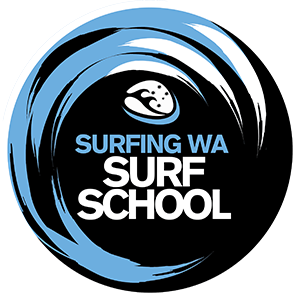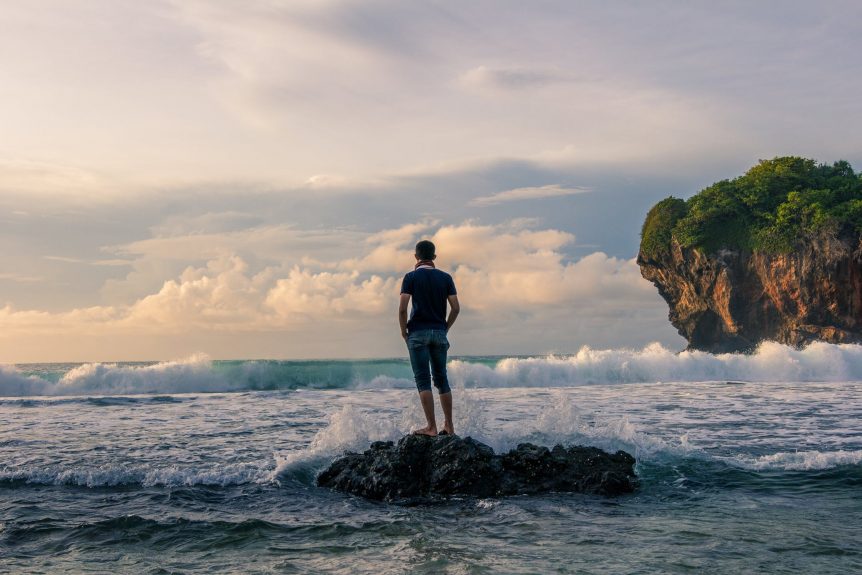Understanding a surf forecast is critical in finding surfable waves
Not so long ago, finding waves was done simply by strapping a surfboard on top of the car and driving to the nearest beach. If it was half decent, you’d go for a paddle, if not, you went home. With today’s technology it is much easier, surfers can find a handful of information about the surf conditions such as the height of the wave, the direction of the wind, the direction of the swell and the height of the tide all at the click of a button by checking an online surf report. Surf reports are a handy way of gaining all the information needed about the current surf conditions in the area. Understanding this information can assist the surfer to visualise what the surf will look like, and if the conditions are suitable for them.
Wave height and swell period
The surf report will tell you the wave height, swell intervals, wind direction and tide.
One of the most frequently asked questions for beginner surfers is, “How big are the waves?” This information is given to us in the form of the wave height and swell period. Swell period is the amount of time is takes for a wave to pass a certain point. The longer this takes, the faster and more powerful waves will be. For example, the report may say 2ft at 15 seconds. Even though the wave is only 2ft, it has a 15 second period which means the wave is traveling from a longer distance (known as a ground swell) and will result in powerful waves. A 2ft wave at 5 seconds will most likely result in small and weak waves. Short period swells generally mean that the wave was created by a storm close by and has not travelled far enough to gain speed and power. Swells that have a wave height of 8ft and a swell period of 22 seconds are going to be huge!
Swell direction
The swell direction is the angle of which a wave is approaching the shoreline from. Knowing which direction, the swell or waves are coming from will give you an idea of how the wave will be hitting your area. Trigg Beach located in Perth WA is a West facing beach break. It receives waves from just about any direction which makes it a great surfing spot all year round. Waves coming from the West direction know as a West swell will hit Trigg point almost directly resulting in good waves. Trigg point also picks up good surf when the swell direction is North or Northeast. The direction from which a swell comes from will make the waves break differently on the approaching shoreline.
Wind direction
Offshore winds are ideal for surfing because they groom the waves surface and can result in a barrelling wave. Ideal conditions for surfing would include absolutely no wind. This is called glassy conditions, and a surfer dream scenario. However, if you do have a little wind, it’s not the end of your surfing world.
There are two types of wind conditions in surfing; on shore wind and offshore wind.
On shore winds blow from the ocean towards the shore. These types of winds are terrible for surfers because it causes a choppy and bumpy surface which is harder to surf on. On shorewinds break up the swells causing the wave height to be smaller and not as groomed. Some surfers who like to perform aerial manoeuvres with their surfboards welcome a bit of onshore wind because it helps keep their surfboards close to their feet when in the air.
Offshore winds are the best kind of wind to have when surfing next to no wind of course. Offshore winds blow from land into the water creating very smooth and well-groomed waves that can typically take a barrel shape. Offshore winds can be a problem when blowing to hard though. Surfers taking off on a wave can get blown back by the wind or sprayed with a large mist of water from the cresting wave making it hard to see as you drop in.
Knowing the wind direction and speed for your surf spot will help you decide which the best time to go out for surf is. Generally, most surf spots will have calm and glassy seas in the early morning with the wind picking up in the afternoon hours and then calming down again in the evening.
Sand banks
The sand banks that run across the stretch of beach at Trigg have the ability to change from day to day. Generally, the summer months from November through to April are best suited to beginners based on the ease that the banks provide. The shallow stretched sandbanks mixed with small swells make for soft white water pushing all the way to shore, making them very user friendly for beginners. These banks form due to the South Westerly onshore winds that hit the metropolitan coastline during the winter and Spring months. Surfing WA Surf School runs beginner lessons at Trigg Beach during these months.
In the Winter, this same stretch of beach becomes a lot more rugged and raw. With big swells crashing the shoreline, the sand banks break apart making for a very deep, rock exposed beach. Between the months of May through to October the surf is often better suited to intermediate and experienced surfers.
Tide
Learning how tides work at your local surf break will help you determine when the best waves will be breaking. Some surf spots do better on a high tide while others do better on a low to medium tide. Knowing which tide is best for your surf spot takes a bit of time to figure out. If you are unsure, just ask a local surfer or surf shop about the best surfing conditions for a spot. If you know how a wave breaks, then you have a leg up. Most beach breaks will work best at a medium to high tide because sand bars maybe too shallow or exposed on a lower tide causing the wave to close out or break all at once. Reef breaks work best on a low to medium tide with the higher tides causing the waves to slow down or go flat. This is because a wave needs to have a shallow bottom to cause friction and make the wave stand up and break on itself. Be careful however, some reef breaks are very shallow and dangerous to surf at very low tides due to exposed sharp coral or rocks.
Tides are controlled by the moon and therefore very predictable. There are two high tides and two low tides every day. Because the way the moon and earth rotate together, the times of the high and low tides will always be 51 minutes later than the day before. Surf reports will give you the times and levels of both high and low tide each day. The tide range, which is the difference between high and low tides for a particular area will also change with the phase of the moon. On a full moon, tides will be extremely high and then go extremely low, while new moons will create moderate to little change in the tide range.
Small groundswell
Why is groundswell cleaner than winds well? When the wind blows on the sea, it produces all kinds of waves of different wavelengths, frequencies, and speeds. As the waves travel, the faster waves gradually separate out from the slower waves. The further the waves go, the more chance they have to sort themselves into an orderly pattern. Groundswell has more time to get itself into shape than winds well. Eventually, the waves form into distinct little groups called sets: when they finally arrive at their destination, a little group of good waves will arrive at once. Then there will be a pause. Then the next group of waves will arrive a bit later.
Hope this article helps you find some good waves!
Photo: Rangga Aditya Armien

